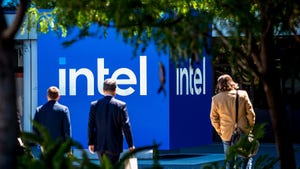AWS Reveals Two Different Edge Data Center Plays at re:InventAWS Reveals Two Different Edge Data Center Plays at re:Invent
Two new types of AWS cloud infrastructure come online in Los Angeles and Chicago.

This morning Amazon Web Services CEO Andy Jassy spent three hours on the AWS re:Invent keynote stage at the Venetian in Las Vegas going through 20 or so additions to the cloud giant’s already massive service catalogue.
All but the last three announcements were of services hosted inside the company’s hyperscale data centers. The last three were different – two of them something entirely new from the physical cloud infrastructure perspective.
In Los Angeles, AWS has deployed a relatively small amount of computing and storage gear inside a building it manages so that a digital artist working on a film for Netflix, for example, could use AWS services for latency-sensitive applications from their computer. Instead of data making several network hops to the nearest full-fledged AWS availability region (in Oregon) and back, it goes to the local zone in the same metro, achieving what Jassy described as “single-digit milliseconds” latency.
Netflix and visual-effects studios FuseFX and Luma Pictures are among the first customers using the new AWS Local Zones service, the cloud provider said. The LA Local Zone is available today, and you can expect the company to launch more such locations in the future, Jassy said.
About 2,000 miles east, in Chicago, is another, different small-footprint AWS data center of a new kind. Located inside a Verizon network switching facility (an SAP, or Service Access Point, site), it is the first location where AWS provides its computing services for applications that use Verizon’s 5G wireless connectivity.
Verizon chairman and CEO Hans Vestberg joined Jassy on stage for the last portion of his keynote to announce the new AWS Wavelength service, which will not be limited to Verizon.
To do “something meaningful” with the ultra-low latency 5G connectivity between a smartphone and their carrier’s network, you need some compute and storage capacity in the mix, Jassy explained. If that capacity is sitting many network hops and miles away, the low latency at the last mile doesn’t matter.
Developers of applications that leverage 5G “can’t afford or don’t want that round trip back and forth,” he said. They need to be at the edge of the telco network, but they can’t all walk up to a telco and say, “I want to be at your edge,” so AWS will do that for them, make all the necessary arrangements with the telcos, deploy the compute infrastructure, and sell cloud services to the developers.
Some companies are deploying edge computing infrastructure for the same purposes directly at the feet of wireless towers. Vapor IO and Packet, for example, have been building edge data centers both at towers and at locations not far from them.
Verizon and AWS are going a different route for now. “We are not deploying on our towers, instead choosing to house equipment at the moment in our SAP locations which are near towers on the edge of our network,” Karen Schulz, a Verizon spokeswoman, told DCK via email.
Verizon will announce more AWS Wavelength locations in the future, she said.
Several customers are already using the service in Chicago “live,” Schulz said. Verizon and AWS only named one of them: Bethesda Softworks, the video game publisher behind The Elder Scrolls, Fallout, and Doom, among others. Bethesda is using the infrastructure for its new game streaming technology called Orion.
Game streaming is one of the most obvious applications for edge computing. The heavy graphics processing and real-time responsiveness required for a good user experience make it all but impossible to stream games from a data center that’s hundreds or even tens of miles away.
AWS didn’t say what kind of hardware it’s using for Wavelength, but the Local Zones service is running on Outposts, the infrastructure stack originally developed for customers who want to use AWS services hosted in their own data centers.
Jassy announced Outposts at last year’s re:Invent, and said today that the product is now in general availability, so, if you want your own mini-AWS cloud and have the space, power, and cooling capacity for it on your data center floor, you can have it.
About the Author
You May Also Like







